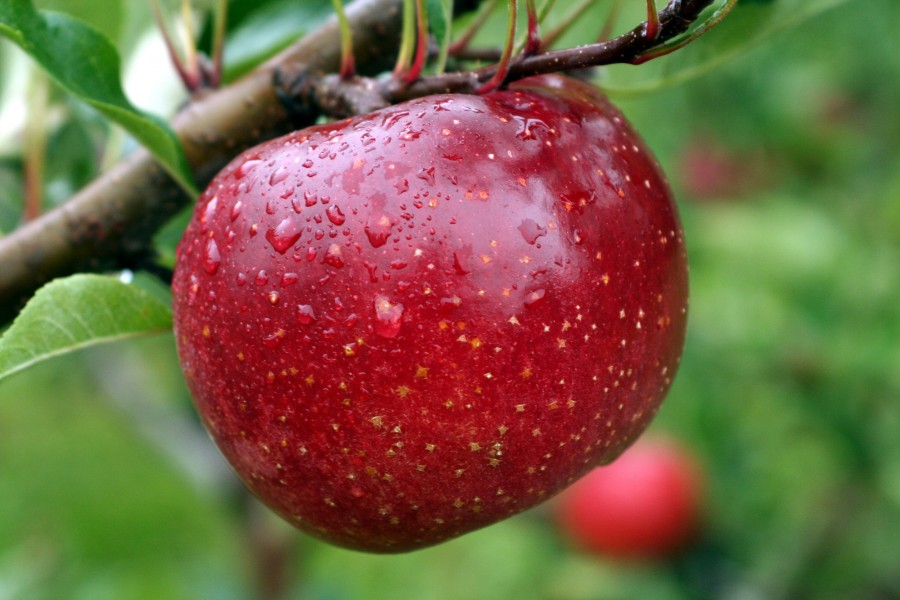
Image from Main Street Monroe article on types of apples in Ohio.
Apples are a healthsome food, and often something people crave. Understandably, if you are looking for a fruit tree to plant, this may be at the top of your list. But, if you are going to plant an apple tree in your yard, you’ve got your work cut out for you. The first step is figuring out which one of the 7,500+ cultivars you want that will do well in your area.
Daunting task, right?
I thought so, which is why I went to an expert. I talked with Russell Beiersdorfer, retired horticultural manager of Beiersdorfer Orchard about how to select, care for, harvest, and store apples. In this post, though, we are only going to talk about selection of your tree.
Know Your Rootstocks and Scions
Russell talked at length about the importance of rootstocks and climate for good growth of apple trees. Rootstocks were developed at universities or nurseries all over the world in order to craft apple trees that were both disease resistant and would work in specific soils for the regions they were developed in. For example, a Russian rootstock, Budagovsky, were developed in Russia for their needs. Does it mean that the rootstock will only work in Russian soils? No, but it’s definitely more likely to be cold hearty.
Russell noted two things to keep in mind when it came to rootstocks:
- Rootstock should work with your ground, the rest is climate related.
- Don’t get a tree with a rootstock that is susceptible to disease (especially fire-blight) and a scion that is also susceptible. It makes them both twice as susceptible than the whole tree alone.
A scion is the name of the tree that you recognise. Honeycrisp, Gala, Paula Red, Cortland, and more are all names that you know. The scion is the top of the tree that is grafted onto the rootstock, and it’s also the type of fruit that you’ll be rewarded with. (Check out Apple Journal for a fairly comprehensive list of varieties.) The sad news is that not all scion varieties will work well in all climates. For example, if you are used to eating a Macintosh grown on the East coast of America, it won’t taste the same — even if you grow the same tree — in the Midwest or West coast.
Russell (ibid.) explained that the climate is to blame for this. You can have the same type of tree with the same rootstock and same scion in two different areas planted at the same time. They will not taste the same due to climate differences in the two areas. Furthermore, as Russell explained, if you have a variety that really prefers a longer dormancy period, then try to grow them in areas with earlier springs, the tree will also likely not fair well.
Recommended resources: Your local university horticulture extension office. Call and ask them if they have any books on apple and fruit trees that grow well in your region. If they do, that’s going to contain a wealth of information specific to your region on what varieties to grow, how to care for them, and when to harvest.
Buying The Tree of Your Dreams

Newly planted apple whip — read the planting story at Iowa White Tail.
Before you head to your local garden centre with your heart set on a particular tree, you should know that the average garden shop down the street won’t know anything other than the scion because that’s what listed on the tag. On top of it, the growers that they get things from may or may not have a lot of experience growing fruit and apple trees that would keep them disease free.
Russell (ibid) recommends that you buy a 1-year-old whip from a reputable nursery. A reputable nursery can mean a lot of things, but Russell tells you to look for the following in the business:
- Will have been in business for many decades
- Will be able to answer all your questions and explain things to you in a way you understand
- Will know what rootstock is on the tree, not just the scion and help you choose the right tree for your needs
- Will guarantee the tree for a year without hesitation
Armed with this knowledge, you should be able to scope out a good apple tree that you can plant in your backyard and enjoy for many years to come.
This is the first post of a 4 part series. Read part two on pruning your trees here.
Bibliography

